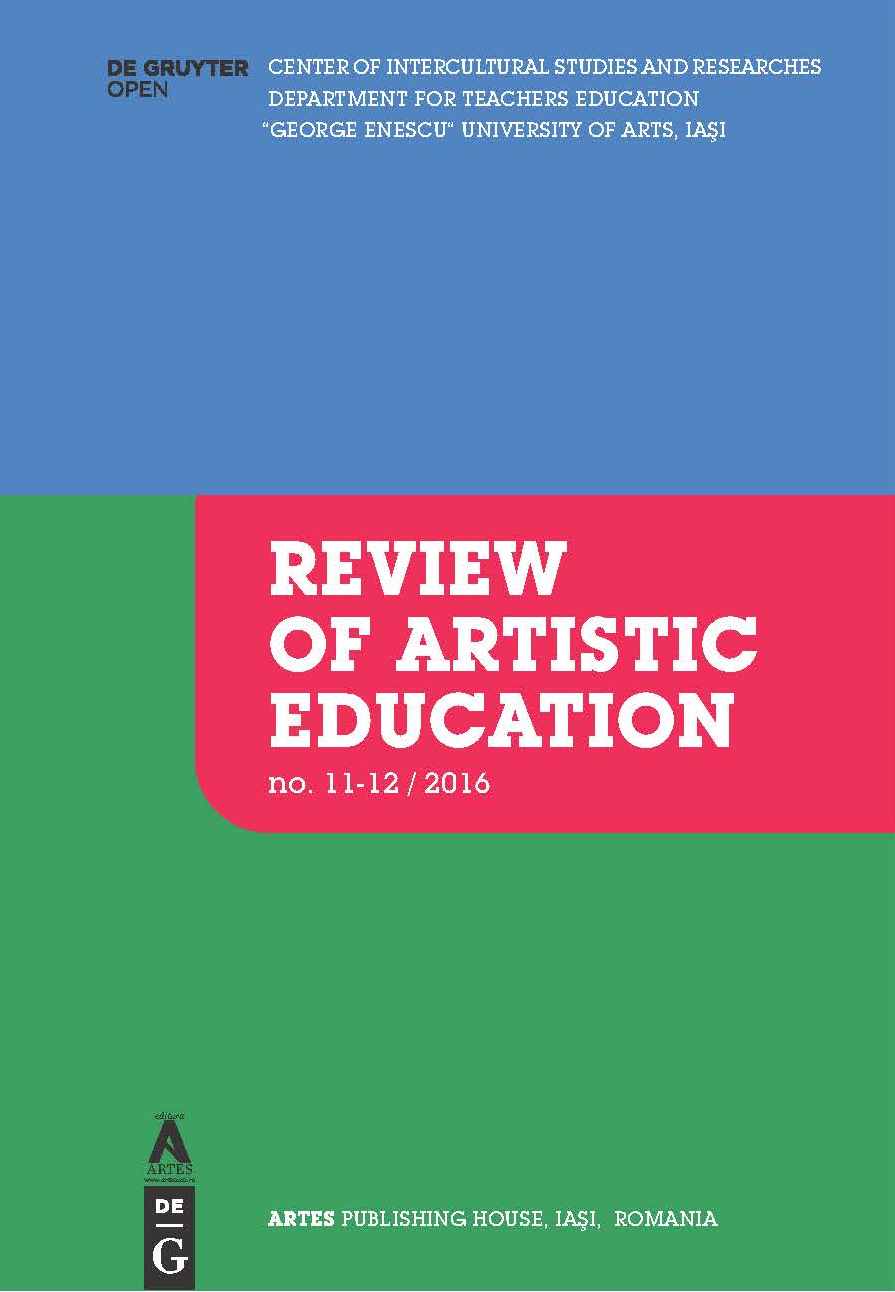TRADITIONAL AND INNOVATIVE METHODS IN APPROACHING MUSIC STYLES. PEDAGOGICAL IMPLICATIONS
TRADITIONAL AND INNOVATIVE METHODS IN APPROACHING MUSIC STYLES. PEDAGOGICAL IMPLICATIONS
Author(s): Loredana Viorica IațeșenSubject(s): Education, Fine Arts / Performing Arts, Music
Published by: Editura ARTES
Keywords: history; style; genre; language; message
Summary/Abstract: The approach to music styles entails an in-depth musicological analysis aimed at synthesizing numerous bibliographical sources belonging to different fields and directions of research. A chronological overview of studies (Jean Molino, Fait musical et sémiologie de la musique, 1975; Jean Jaques Nattiez, Quelques reflexions du style, 1993; R. J. Pascall, Style, in The New Grove Dictionary of Music and Musicians, 1994; Jean Jaques Nattiez, La musique de l’avenir, in Musique. Une Encyclopédie pour le XXI siècle, 2003; Mario Baroni, Stil şi mutaţii stilistice în tradiţia muzicală europeană, in Musique Une encyclopédie pour le XXI siècle, 2006) and of universal (Leonard Meyer, Explaining Music, 1973; Charles Rosen, Le style classique: Haydn. Mozart, Beethoven, 1978; Leonard B. Meyer, Style and Music. Theory, History and Ideology, 1989; and Romanian specialised literature (Cornel Ţăranu, Elemente de stilistică muzicală (sec. XX), 1981; Edgar Papu, Despre stiluri, 1986; Valentina Sandu-Dediu, Alegeri Atitudini Afecte, 2010; Vasile Iliuţ, O carte a stilurilor muzicale, 2011; Valentin Timaru, Stilistică muzicală, 2014) from the late 20th century and the beginning of the 21st century, reveal the different and, more often than not, contrasting views of historians, analysts, aestheticians, philosophers, scholars and educators, starting from the meaning of the very idea of style, to the reception of this phenomenon in contemporaneity. On these grounds, this study proposes a systematization of the most relevant landmarks in documentation to date, for the purpose of applying them from a didactic perspective.
Journal: Review of Artistic Education
- Issue Year: 2016
- Issue No: 11+12
- Page Range: 88-98
- Page Count: 11
- Language: English
- Content File-PDF

